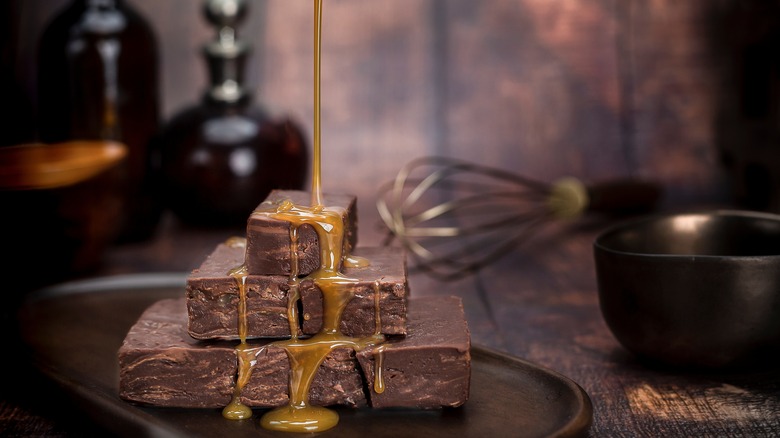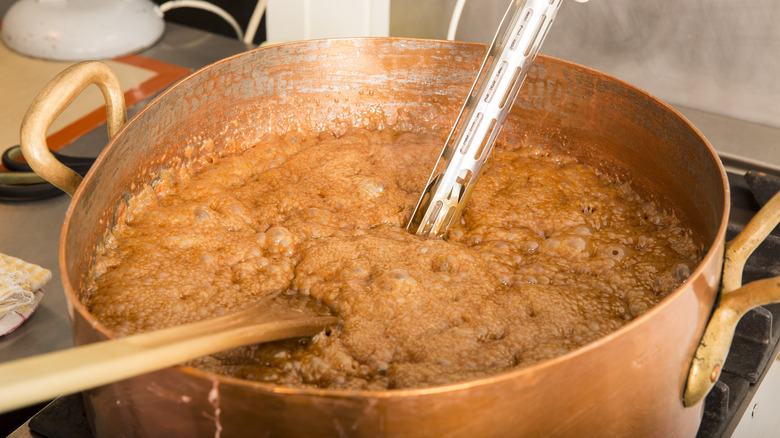The Temperature Rule You Need To Follow When Making Fudge
Sweet, smooth, and slightly sticky, fudge is ideal for those who love delicate desserts. And it doesn't hurt that it typically requires only three ingredients, although our 4-ingredient salted caramel fudge helps you go the extra mile. Made by melting sugar and cooking it with cream, fudge is pretty straightforward to make and all too delicious to enjoy.
That said, a perfect fudge doesn't just come by without watching the cooking temperature closely. A simple candy thermometer will save you from fumbling your fudge. Although most people can wing it while making this dessert, one has to question whether they've ultimately nailed the texture. With a thermometer, you can be sure of it. Even better than relying on visual cues, a thermometer will help you know when to stop heating fudge.
The goal when making fudge is to form sugar crystals tiny enough to give it a smooth texture; you start with a sugar and milk solution and cook it until the water evaporates to the ideal sugar concentration to make fudge. Using a thermometer, you can recognize this stage as 235 degrees Fahrenheit, better known by confectioners as the "softball" stage. At this stage, a piece of fudge dropped into cold water will form a soft ball you can smash between your fingers.
Temperature rules aren't meant to be broken
If you let the temperature rise above 235 degrees Fahrenheit, evaporation continues and things take an unpleasant turn. The solution becomes even more concentrated until it has too little water. Consequently, your fudge will be too hard (rock candy). In contrast, cook the solution for too short and there will be too little evaporation resulting in fudge that's too soft. At softball temperature, there's just the right amount of water for the fudge to come out creamy and smooth.
Once your fudge solution reaches 235 degrees Fahrenheit, the next step is to let it cool down. You can do this by placing the pot in an ice bath to help speed up this process. If you've heated the solution successfully, this phase will lead to a lusciously smooth fudge. But beware, you don't want to stir the mixture while it cools. Constant stirring at this stage leads to seed crystals forming, resulting in a grainy fudge.
Once the fudge has cooled to about 115 degrees Fahrenheit, you can stir it again and notice it turn from glossy to matte. At this point, the fudge is ready to pour into a pan or mold and transfer to the fridge to set. Using this temperature rule and our 15 tips to make the best fudge, you're guaranteed silky smooth fudge each time.

